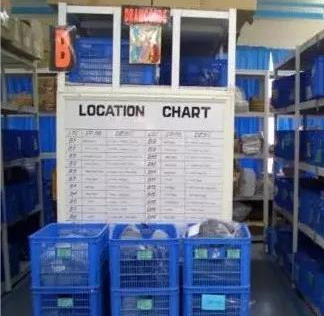There are too many excipients in the warehouse and need to be coded
In factories with extremely simple materials and few types of materials, it may not matter whether there is material coding. However, in factories with hundreds or thousands or more tens of thousands of materials, material coding is particularly important.
At this time, the materials are accepted, accepted, requisitioned, reminded, counted, stored, etc., and the materials are coded to make the departments improve efficiency, and the materials are quickly transmitted and the communication is easier.
Material coding must conform to the principle of material coding. Reasonable material coding must have the following basic principles: simplicity, classification scalability, integrity, unity, consistency, scalability, organization, adaptability to computer management, sufficiency, Easy to remember.

The following will introduce:
The purpose of coding is to simplify the materialization and facilitate the management of materials. If the coding is too complicated, it violates the purpose of coding. Because the material code should be simple and clear in the application of the text number or number, this can save the time and procedures for reading, filling, and copying, and reduce the chance of error.
When the materials are quite simple, as long as the materials are simply classified into several items, there are many material classification items, which is very inconvenient. If the material is quite complex, the large classification should be subdivided. This classification expansion is also called multi-level classification.
2. Classification expansion
The material is complicated. After the material code is classified, it needs to be subdivided. If Arabic numerals are used, each segment can only be composed of up to ten subdivided items. If English letters are used, there are 26 subdivisions in each segment. If there are too many sub-items, it will be difficult to find, and if there are too few sub-items, the classification will be too slow, and the classification sub-items will usually be five to nine.
When the material is coded, all materials should have the material code to be returned, so that the material code can be complete. If some materials cannot find the material code assigned, it is clear that the material code lacks integrity.
The production of new products and new materials is likely to destroy the integrity of the material code. Therefore, whenever new materials are produced, new material codes should be assigned, and new materials are not coded. The purchasing department must not engage in procurement. Even if new materials without material codes are purchased, the warehouse department or accounting department finds the material purchase order. If the material code is missing, the purchasing department should fill in the material code. Otherwise, it will not be put into storage or payment will be made. This ensures the integrity of the material code.
The unity of material coding means that a material code can only represent one material. Only one material code can be found for the same material, and no material has several material codes, or one material code has several materials. Generally, as long as the material The physical or chemical properties vary. As long as the material is to be stored in the warehouse, it must be assigned a code. For example, if a part is subjected to three steps of stamping, drilling and painting.
If the three processes of the material are completed in the same workshop, the processing unit is not replaced, that is, the drilling is performed immediately after the stamping, and then the painting is carried out. If there is no storage or delivery in the middle, the material may take a code. If the three processes of the material are not completed in the same workshop, the order is stamping, warehousing, picking, drilling, warehousing, picking, painting, warehousing, in order to distinguish the three materials in the inventory management Status, you must take a different material code. The three codes 3000A, 3000B, and 3000C respectively represent materials of three different processing states.
5. Consistency
Material coding should be uniform and consistent. If the classification is based on the age limit, it should be used all the time. It cannot be changed in the middle of the classification by the birthplace or surname. To do so, it must be segmented or graded.
6. Flexibility
Material coding should take into account the future expansion of new products and changes in product specifications. The room for retracting the reserved materials cannot be arranged only for the current status of the materials. Otherwise, when new materials are produced, there will be no new materials to be edited.
7. Organizational
The material code is organized and arranged in an orderly manner according to the system it encodes, so that a material account card or data can be found from the material code at any time. The organization of the material code can save unnecessary troubles for material management.
8. Adapt to computer management
The application of computers has become more popular, so it is necessary to consider the convenience of entry when encoding, such as coding as short as possible and using other symbols, such as ‘#’, ‘-’, ‘*’, etc.
9. Adequacy
The words, symbols or numbers used in the material coding must be of sufficient quantity to be composed of individual materials, which are sufficient to represent all individual materials and to meet the actual needs of future material expansion, so as to avoid the absence of special materials. Edited. Otherwise, the material system is destroyed and it takes time and error.
Without affecting the above nine principles, the material code should select words, symbols or numbers that are easy to remember, or give hints and associations. However, this principle is a secondary principle. If the above nine principles are comprehensive and the material code lacking this principle is still an excellent material code.
Reprinted from the network


